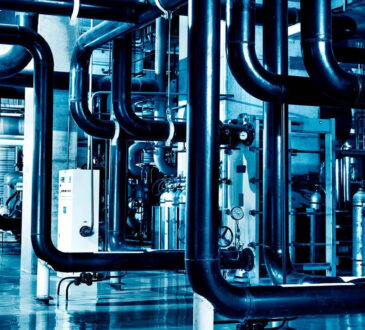The challenges faced by manufacturers makes for a long, troubling list indeed. Challenging political climates and other factors give manufacturers several headaches to deal with on an ongoing basis. Several solutions are being offered, and the internet of things (IoT) is at the heart of positive change. Increased connectivity and deeper data analytics are giving manufacturers the ability to deal with these issues in greater and more engaging ways.
The benefits of greater connectivity are just starting to be realized. However, we can already see how such things are changing the world of manufacturing for the better.
How IoT Is Impacting Manufacturing
Imagine the concept of digital/connected factories. In this sense, we mean that machinery utilizing IoT can give original equipment manufacturers or even engineers the ability to remotely work and anticipate. They will be able to truly optimize everything you could ever demand from something such as process automation.
Managers will have a chance to identify key result areas. You can already see manufacturing benefiting from these things.
Enabling condition-based alerts for maintenance is another way IoT, connectivity, and data analytics are transforming everything we understand about manufacturing. A wide number of essential machine tools must maintain functionality at specific temperatures and/or vibration ranges.
Through IoT and greater connectivity, we can now better catch instances in which these tools are in danger of deviation from their specific parameters. Being able to catch these issues before they spiral out of control is leading to improved efficiency on a level previously unimagined.
Managing And Monitoring The Flow Of Production
The internet of things is giving manufacturers better control over so many different aspects of their work. One area involves the flow of production. Companies are now using things like enhanced connectivity and data analytics to deal with problems in a straightforward fashion.
From the refining process, to the point in which the products are packaged for distribution, companies can use real-time data to adjust. In other words, manufacturers can not only deal with things in the present. They can also use this information and these tools to make decisions for the future. As far as progress inventory is concerned, companies are getting better and better at learning how to eliminate waste and unnecessary challenges/work.
We are seeing reduced machine downtime, as well. This brings us to the subject of predictive maintenance. Taking data from various sources in real-time, companies can make changes to things before the problem arises. Companies are also getting better at anticipating potential issues before they ever even occur.
With deeper insights, companies are clearly in the best possible position to maintain their operations in the most efficient fashion possible. This is obviously leading to significant benefits. For one thing, customer satisfaction is at an all-time high. The companies that best know how to use things like data analytics and the IoT are the companies currently enjoying the strongest relationships to their clients.
The Future Of IoT, Connectivity, And Data Analytics In Manufacturing
Predictive maintenance is just one of the ways in which companies are using these concepts to better serve their clients. Being able to deal with problems before they become problems will obviously lead to happier customers.
Analytics also give companies the ability to understand how customers are utilizing and responding to their products. This allows companies to make more informed decisions, when it comes to shaping future ideas and products. This is another example of how companies can use what we have discussed here to enjoy fuller relationships to their customers.
As time goes on, we can expect the future of IoT, connectivity, and data analytics to have greater positive benefits in the world of manufacturing with large systems using JD Edwards services to keep down-time minimized and improved security.
Both safety and quality control are already in better shape now than at any other time in modern history, thanks to these concepts. Being able to predict potential issues means avoiding workplace hazards before someone is hurt, or worse. It also allows for products to maintain better quality control practices, over the course of production.
These things are only going to continue improving, as long as manufacturers are willing to embrace and understand everything offered by such tools as data analytics and the internet of things.
Author Bio
Chris Giarratana is a digital marketing consultant who works with small business and nonprofits. He helps drive conversions and boost sales through SEO marketing, freelance copywriting, and PPC management.




